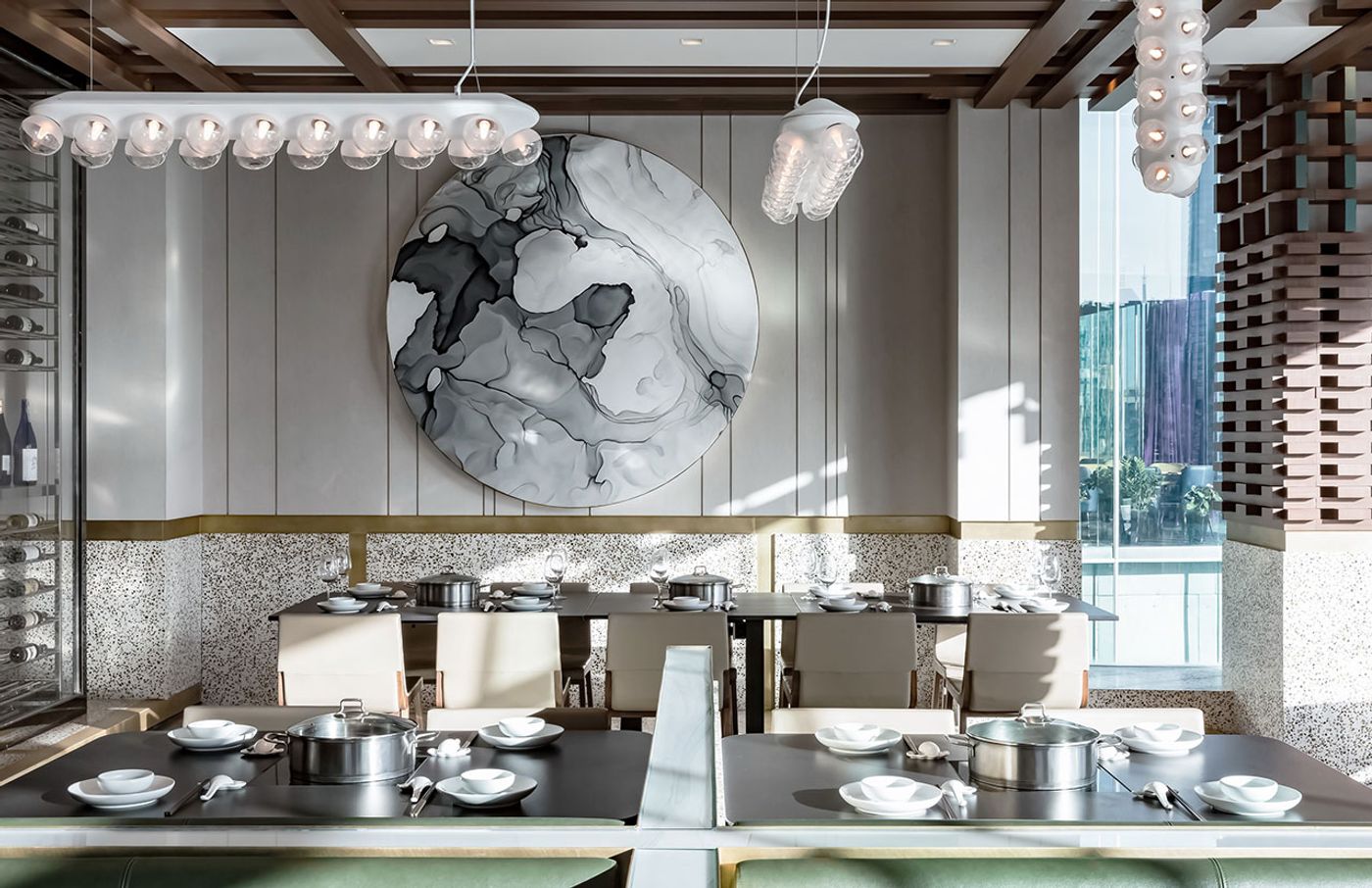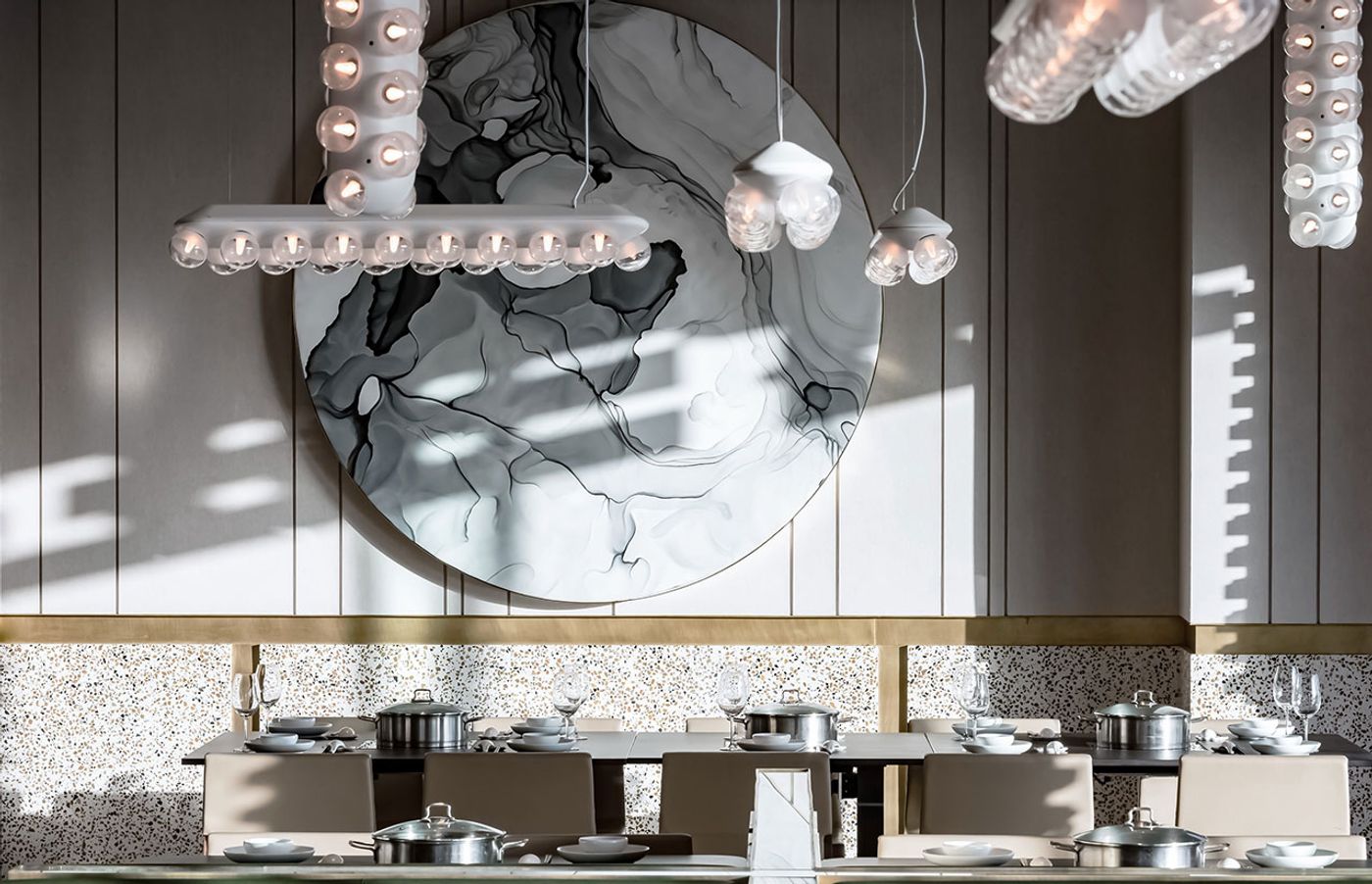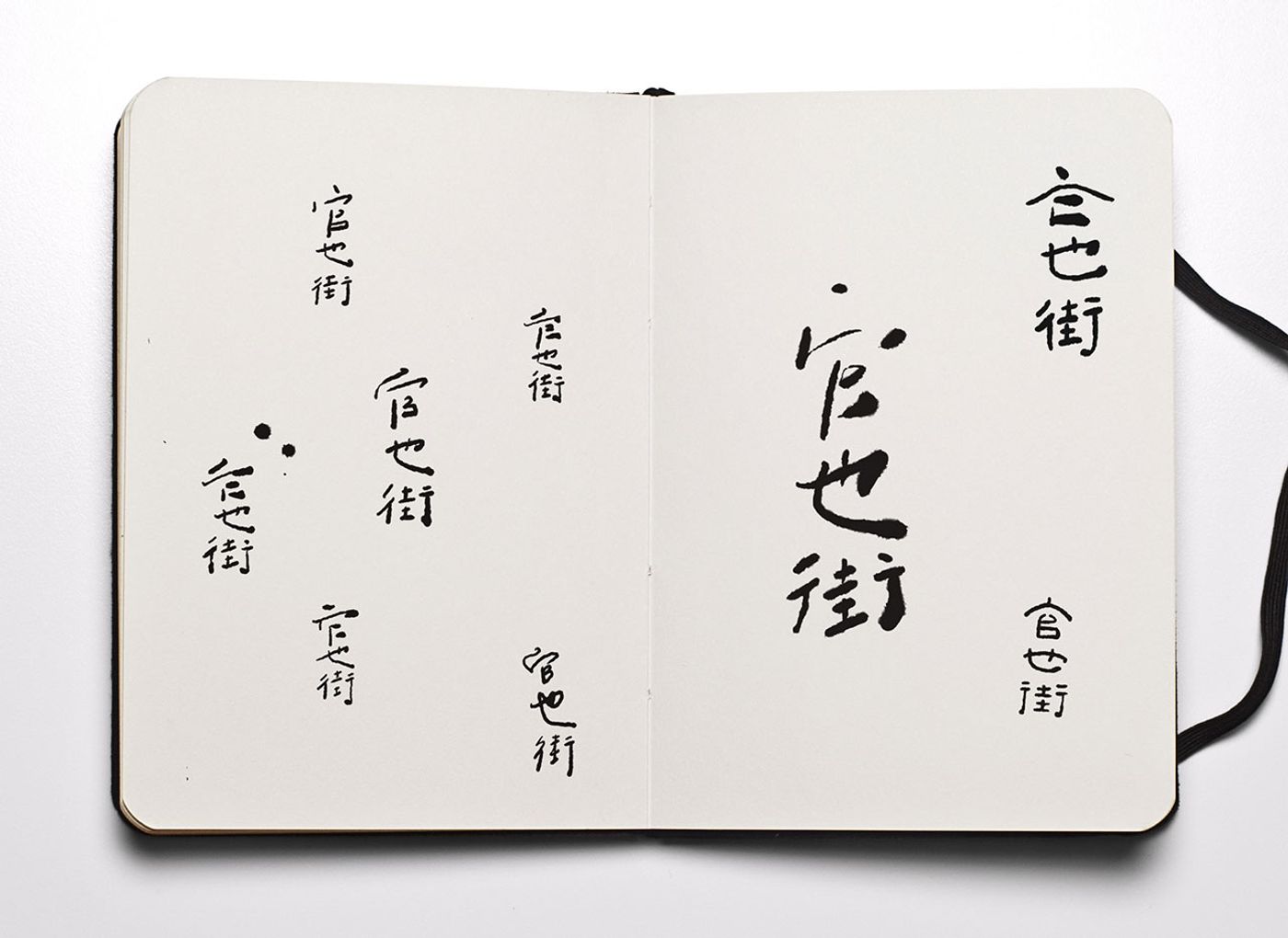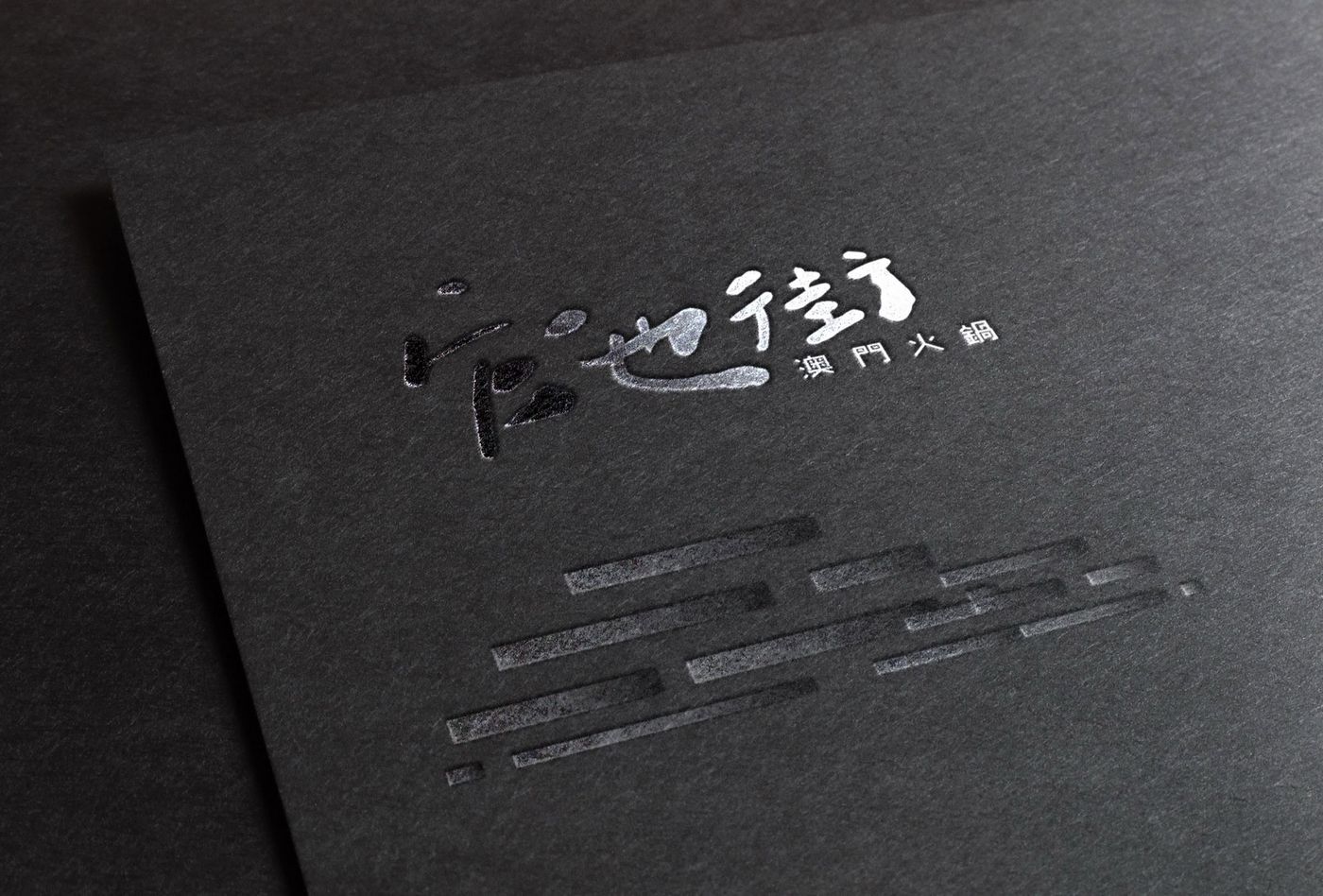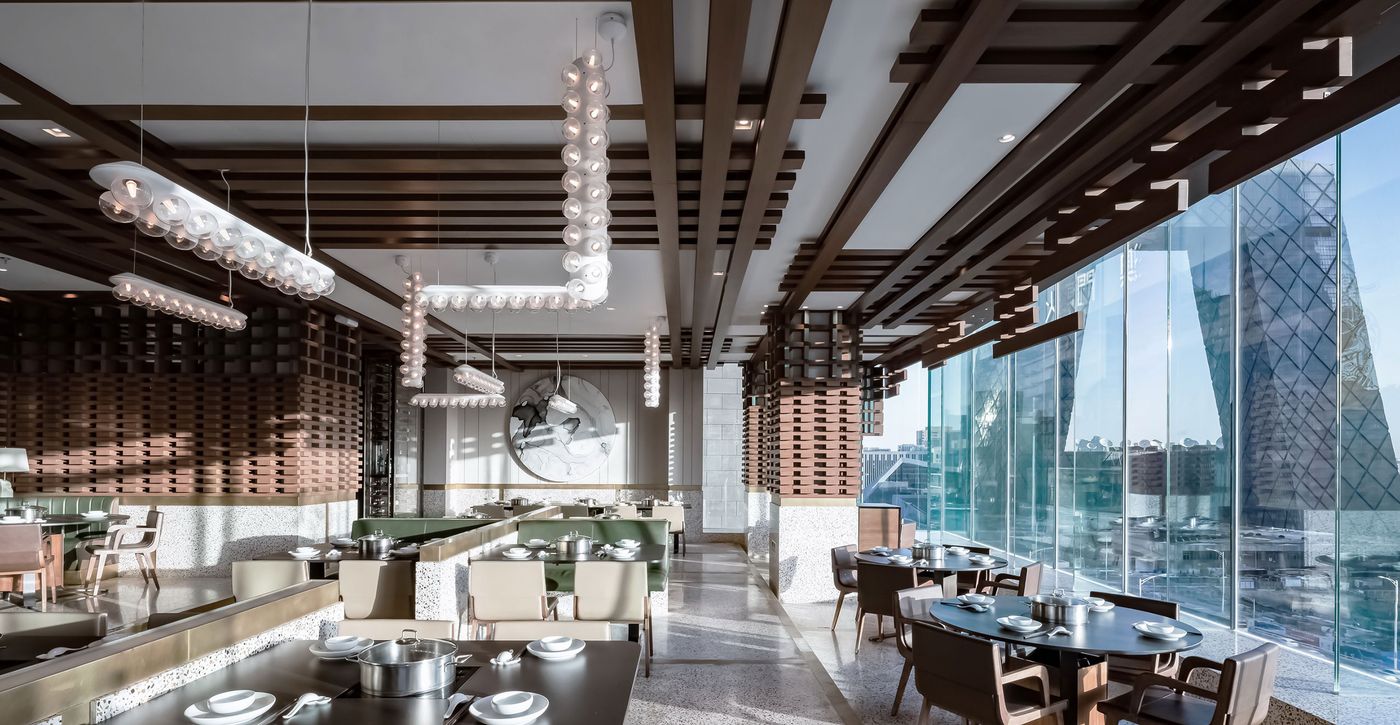
Macau’s Flavors Meet Beijing’s Sophistication in Rua da Cunha Restaurant
Words by Yatzer
Location
Beijing, China
Macau’s Flavors Meet Beijing’s Sophistication in Rua da Cunha Restaurant
Words by Yatzer
Beijing, China
Beijing, China
Location
Taking its name from a street of culinary delights in Macau, Rua da Cunha Macau Hotpot is a ten-year old Beijing restaurant that serves a blend of southern Chinese and Portuguese cuisines inspired by the owner’s hometown. Its new branch in Beijing’s Central Business District, designed by local practice Golucci Interior Architects, similarly blends a modernist sensibility with traditional decorative motifs to create a sophisticated environment where patrons can enjoy a fine-dining menu of fresh seafood, Australian beef and organically sourced vegetables along with panoramic views of the city’s skyscrapers.Serendipitously, the architects had been regular customers of the restaurant's original Beijing venue due to its proximity to their office. When they were commissioned to design the interiors of the new branch years later, they approached the project with the invaluable, first-hand knowledge of its cultural and culinary identity which needed to be transferred, this time, to the high-end, corporate environment of the CBD district.
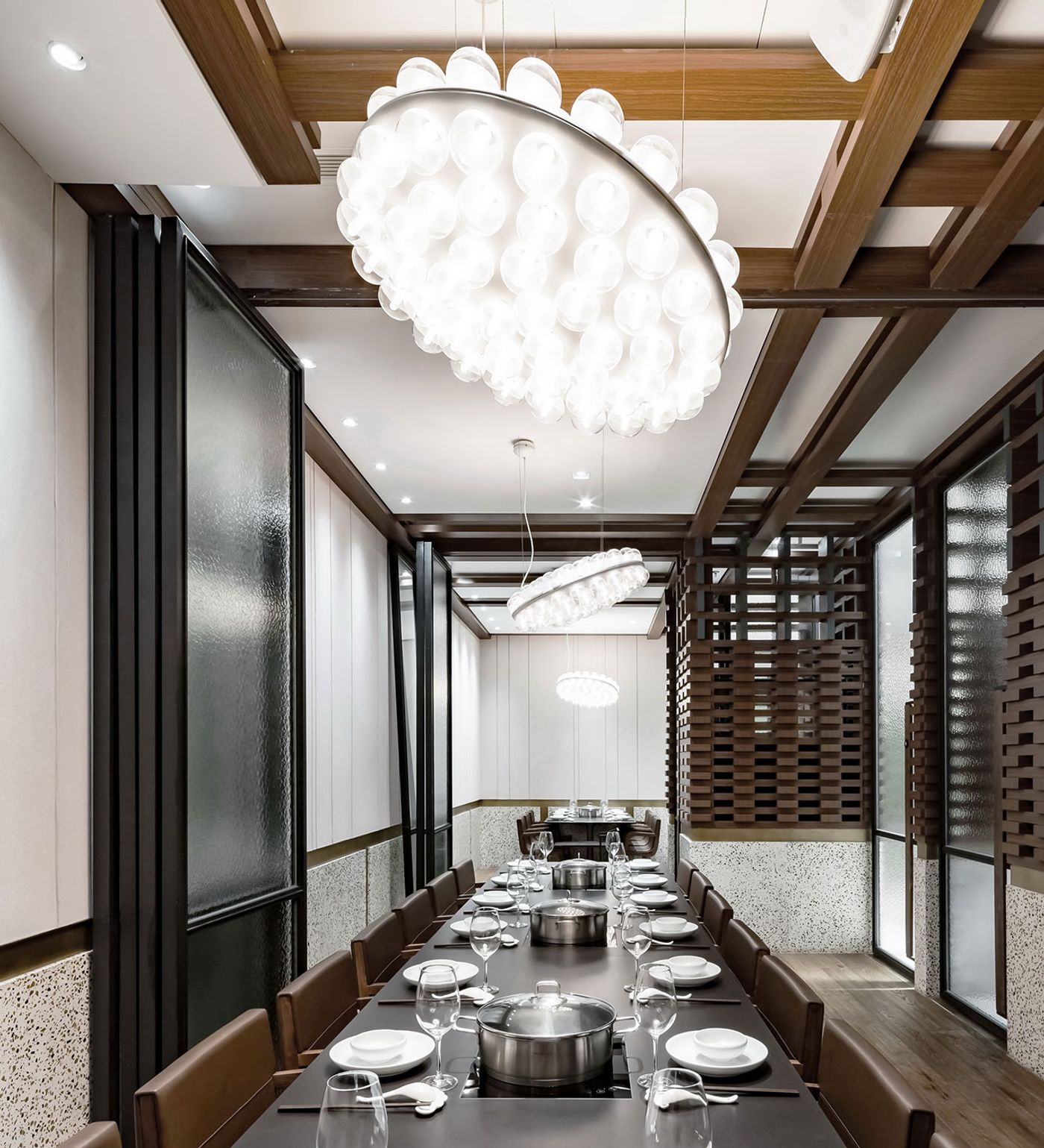
Photo © Luluxi.
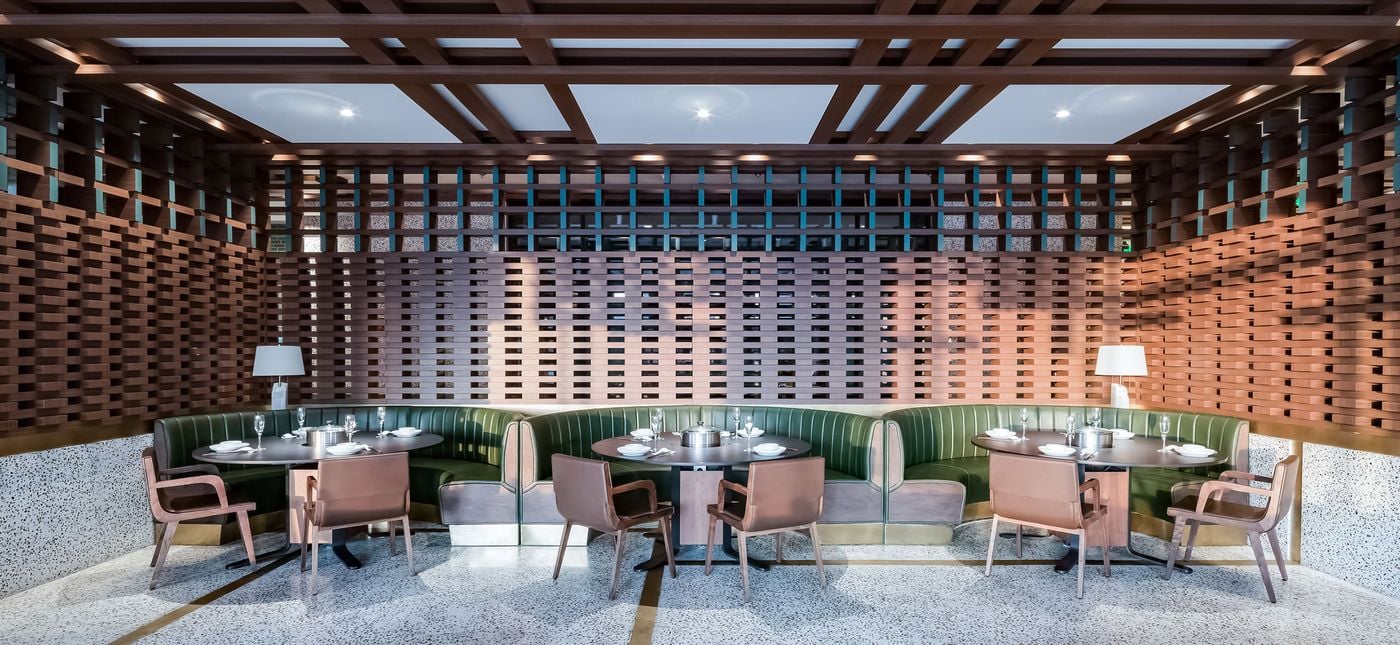
Photo © Luluxi.
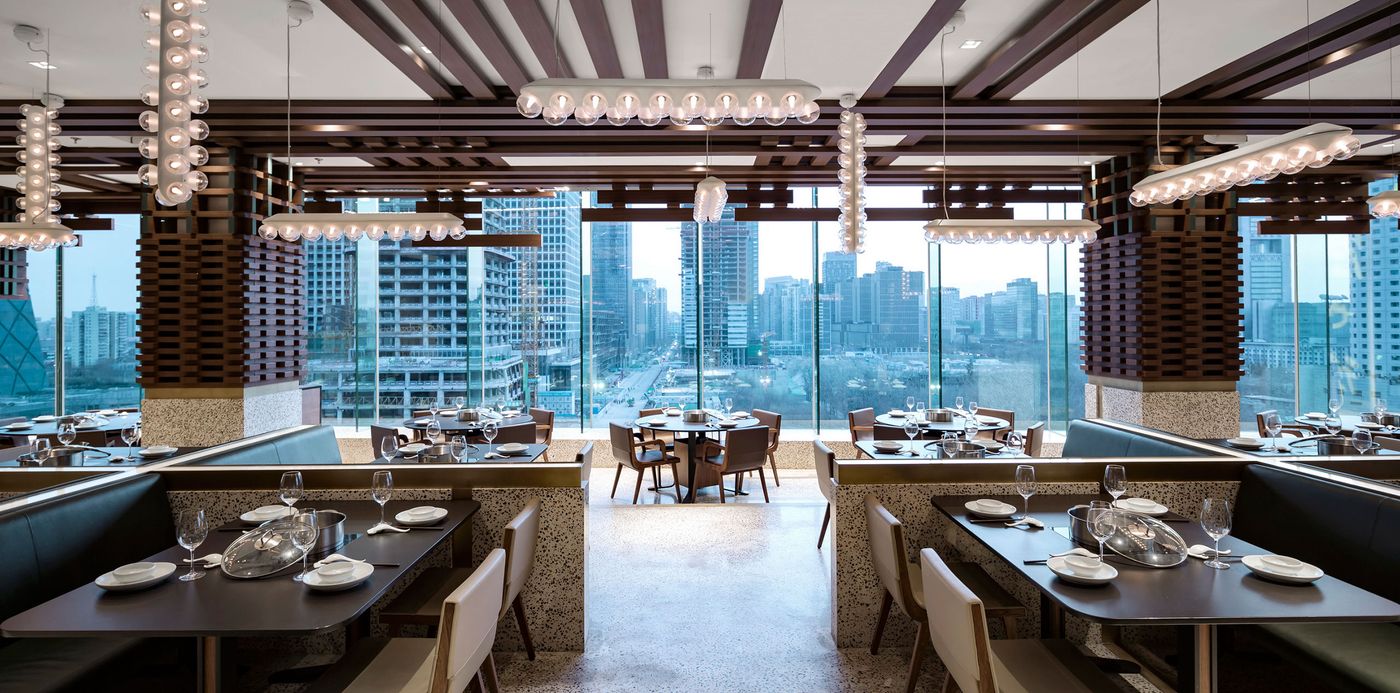
Photo © Luluxi.

Photo © Luluxi.
Taking advantage of the building’s glass curtain façade, the restaurant is centred on a large open-plan dining hall arranged in three parallel zones in stepped configuration to ensure, in conjunction with the orientation of the tables, that all patrons can enjoy the expansive view of the city which includes the iconic CCTV building, Rem Koolhaas’ looped glass towers.
Additional dining booths at the back of the building may be cut off from external views but are compensated by an aquarium-like sculptural composition comprising an array of glass water tanks, populated by crabs, lobsters and other crustaceans featured on the menu, and a stepped fountain structure. Around the corner, an open-plan kitchen featuring butcher blocks fashioned out of tree trunks allows glimpses of the cooks preparing the meat. Further on, private dining rooms are enclosed in translucent partitions, their lit interiors functioning as light boxes that enhance the restaurant’s ambience.
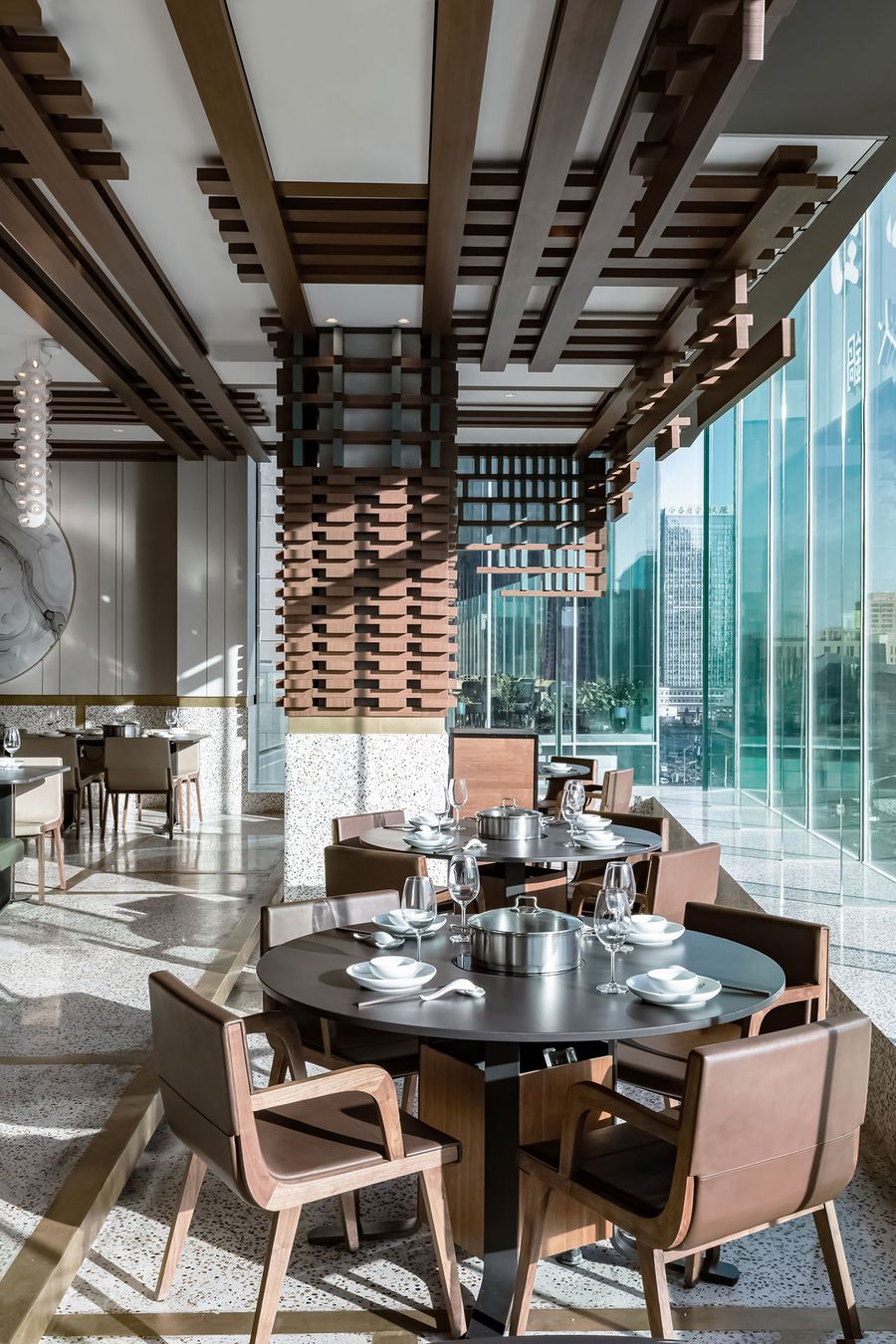
Photo © Luluxi.
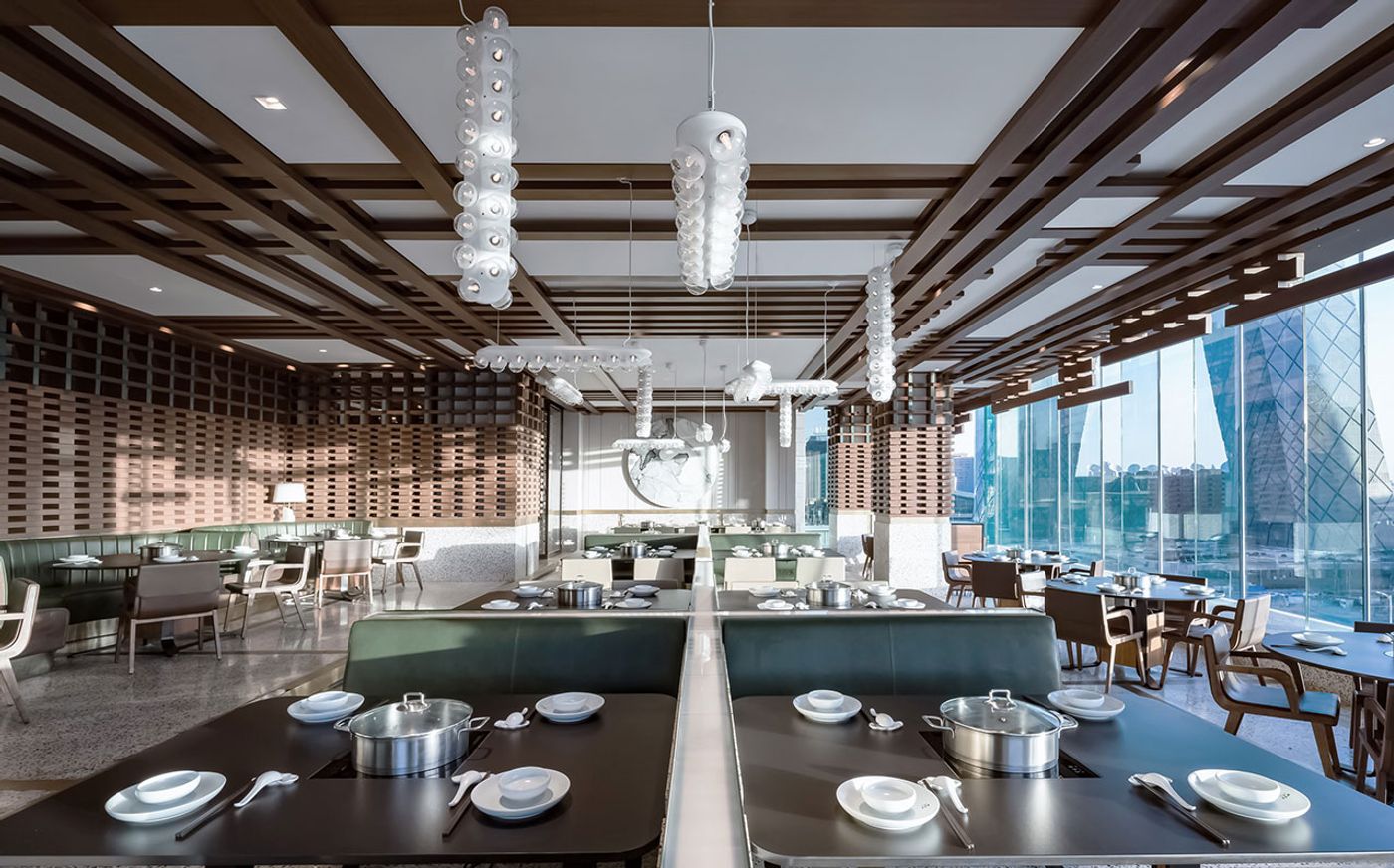
Photo © Luluxi.
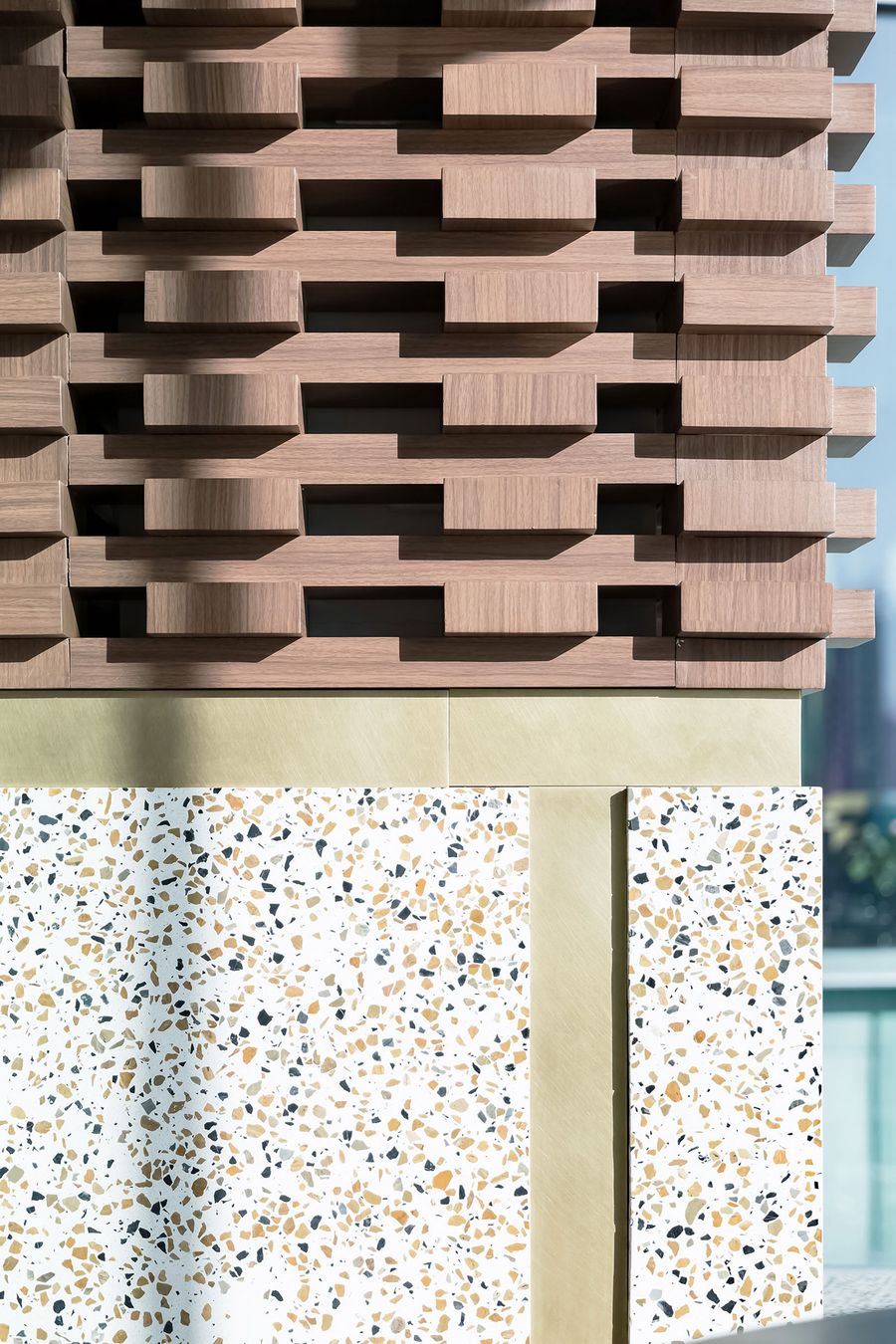
Photo © Luluxi.
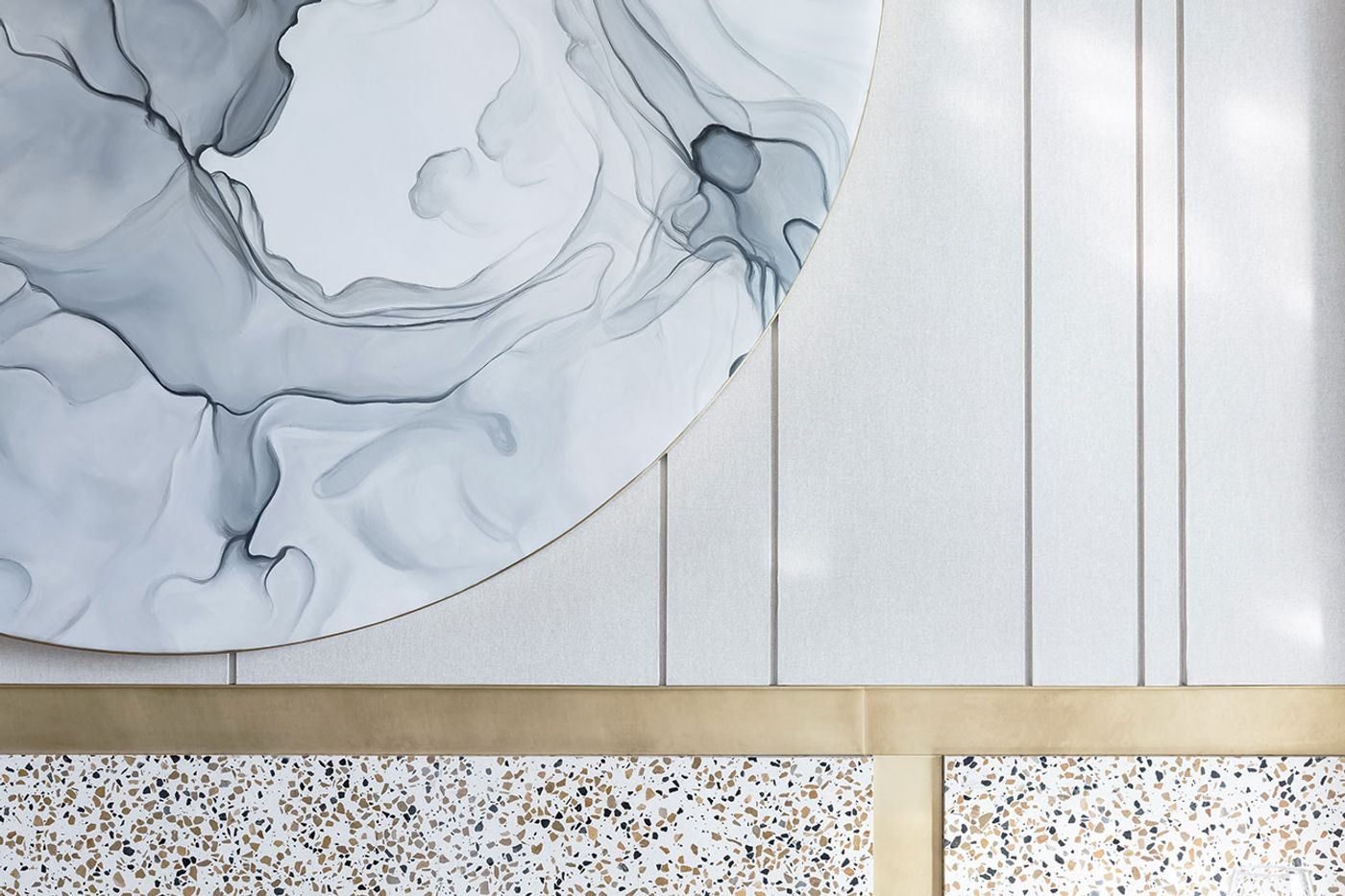
Photo © Luluxi.
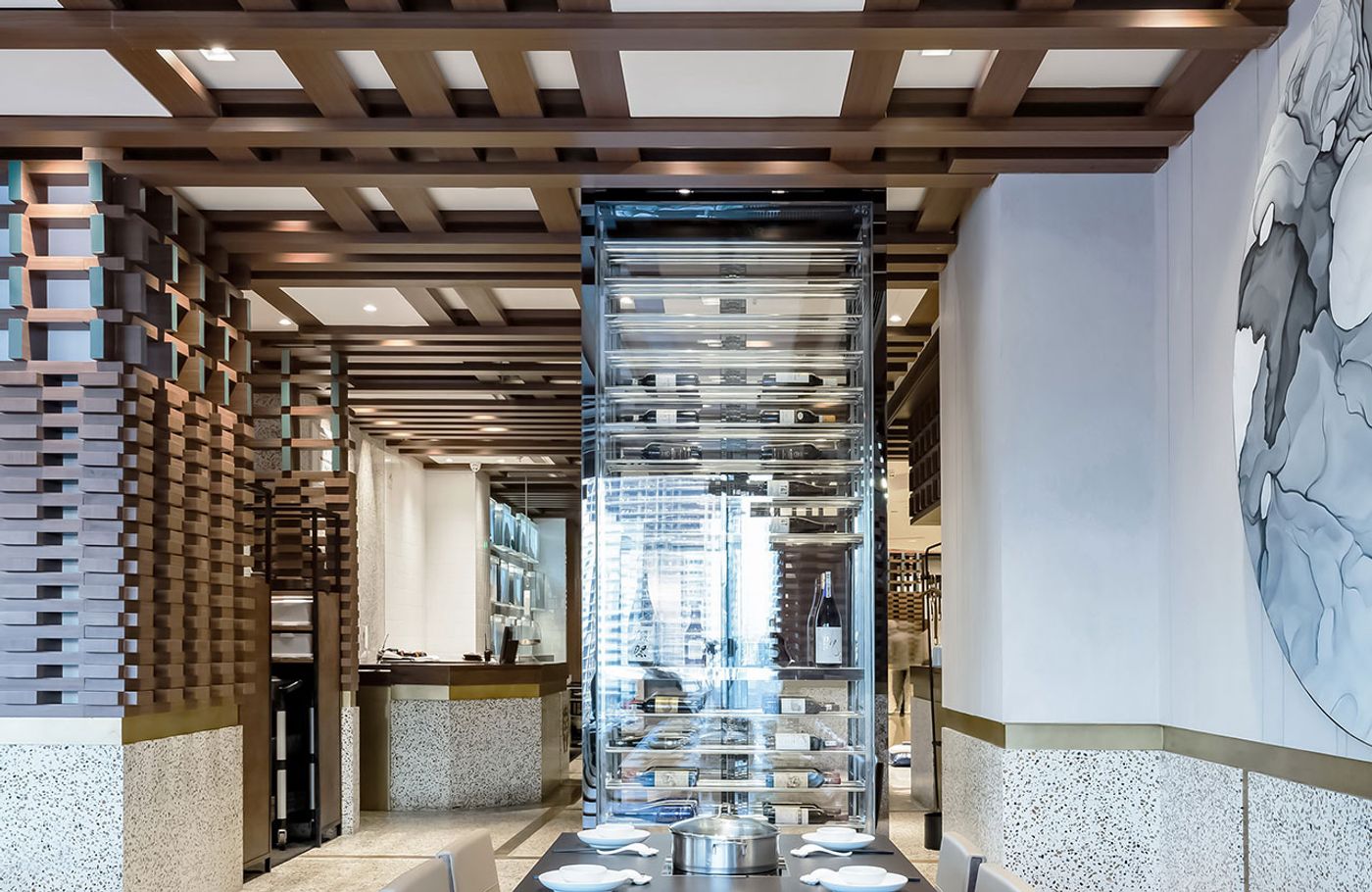
Photo © Luluxi.

Photo © Luluxi.
The interior décor is structured in three complementary horizontal zones. High-gloss, polished concrete aggregate covers the floors and lower part of walls and columns, delineated by a grid of brass strips whose rectilinear language is picked up by the tartan-like pattern of timber strips that adorn the ceiling while in between, timber latticework is separated into bands of higher and lower densities. The latticework of lush brown timber brings to mind traditional Chinese woodwork while the polished concrete and brass surfaces evince a European classic vibe that the design harmoniously ties together though a modernist aesthetic of clean lines and geometric integrity.
The earthy hues of the aggregate concrete and timber surfaces are complemented by the lush green leather banquettes and dark brown tables as well as the smoky marble stands of the fresh seafood displays and the polished green tiles that function as a backdrop to the open kitchen. Nebulous light fittings comprised of clusters of glass spheres in linear or disc formations hover above the tables completing Rua da Cunha’s elegant interiors, which, similarly to a kite in the sky, as the architects lyrically explain, is flying high above contemporary Beijing while also being grounded miles away in the traditions of Macau.
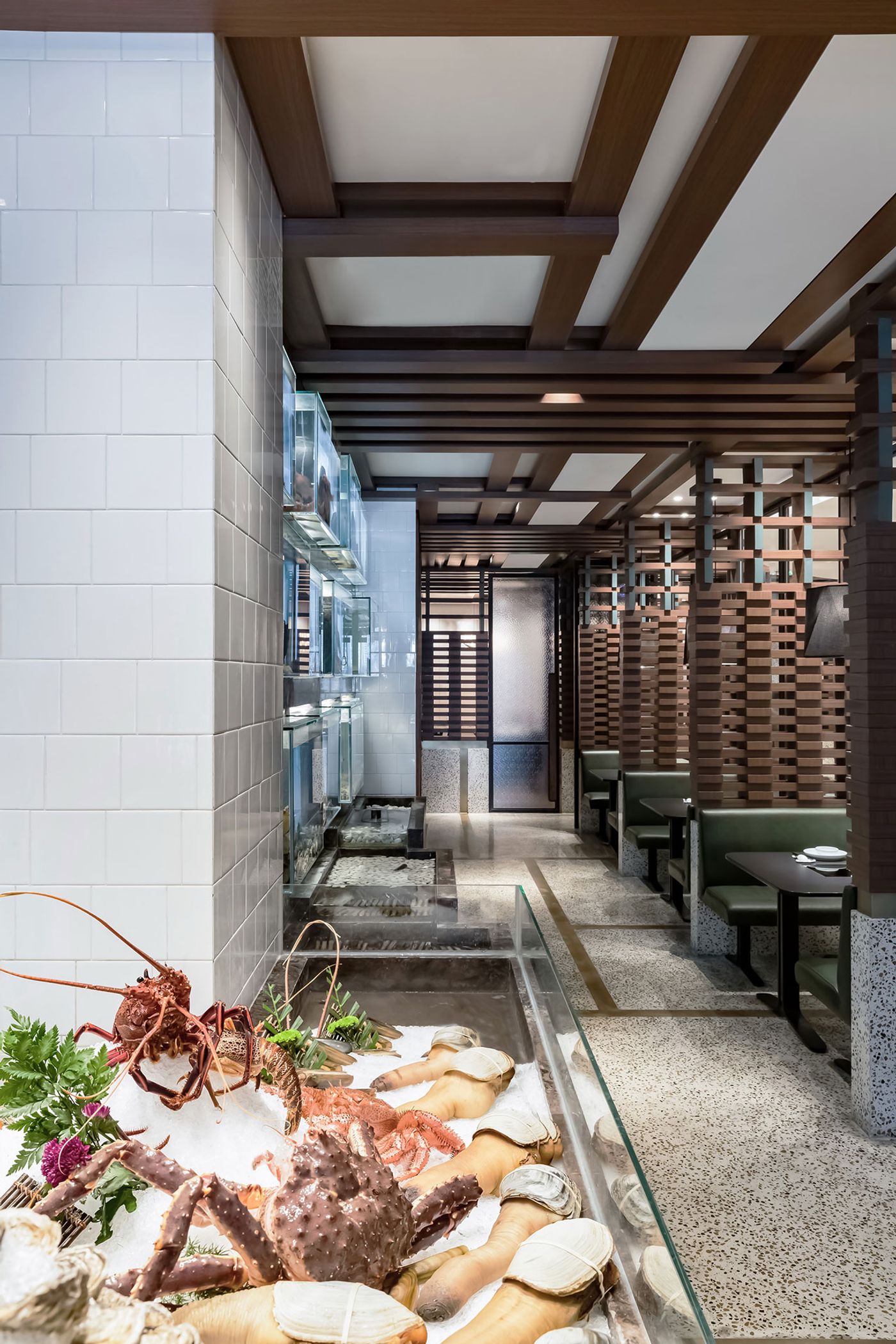
Photo © Luluxi.

Photo © Luluxi.
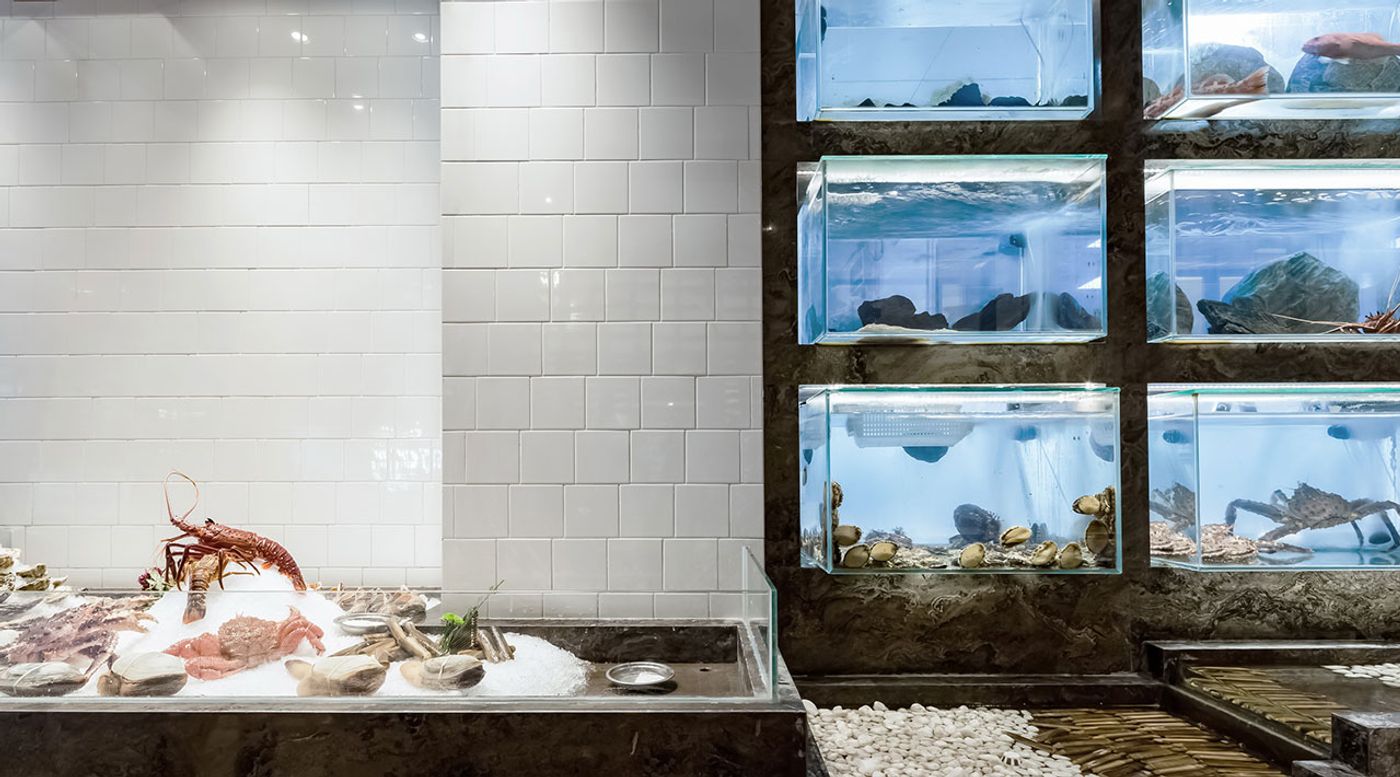
Photo © Luluxi.
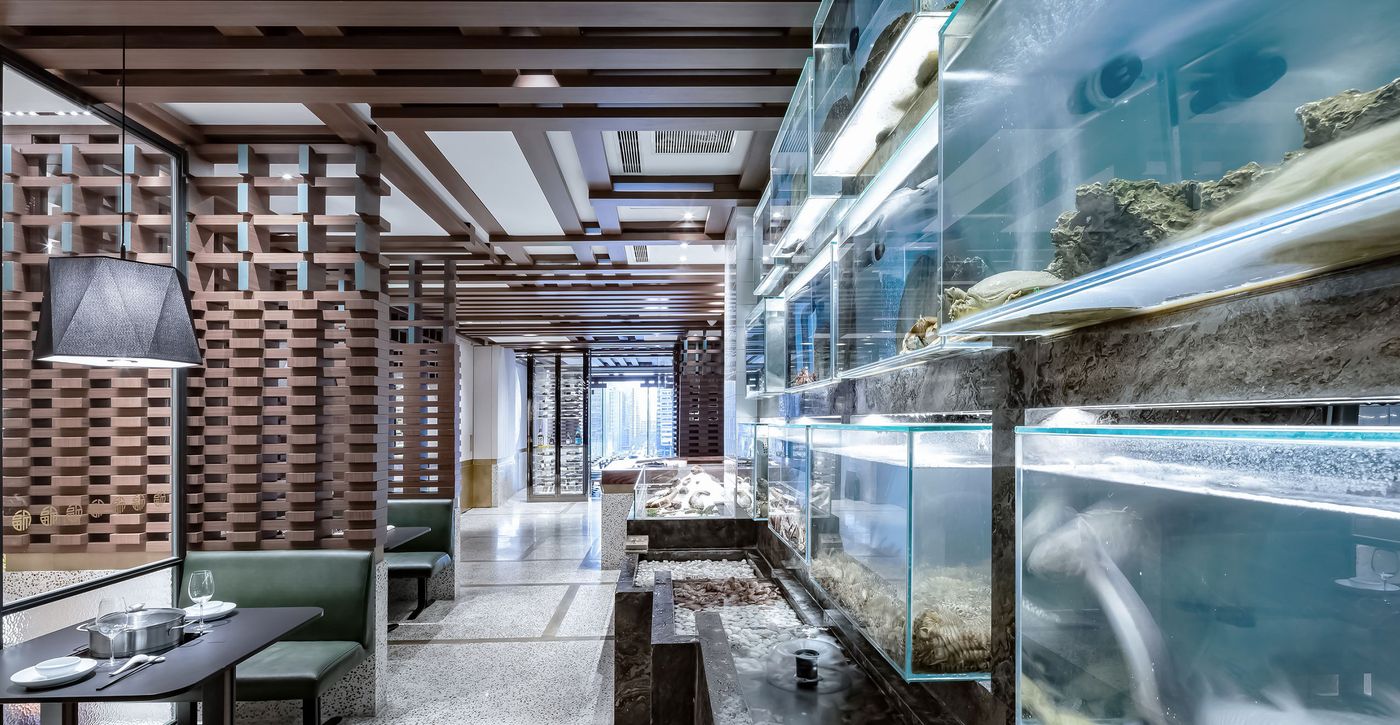
Photo © Luluxi.

Photo © Luluxi.

Photo © Luluxi.
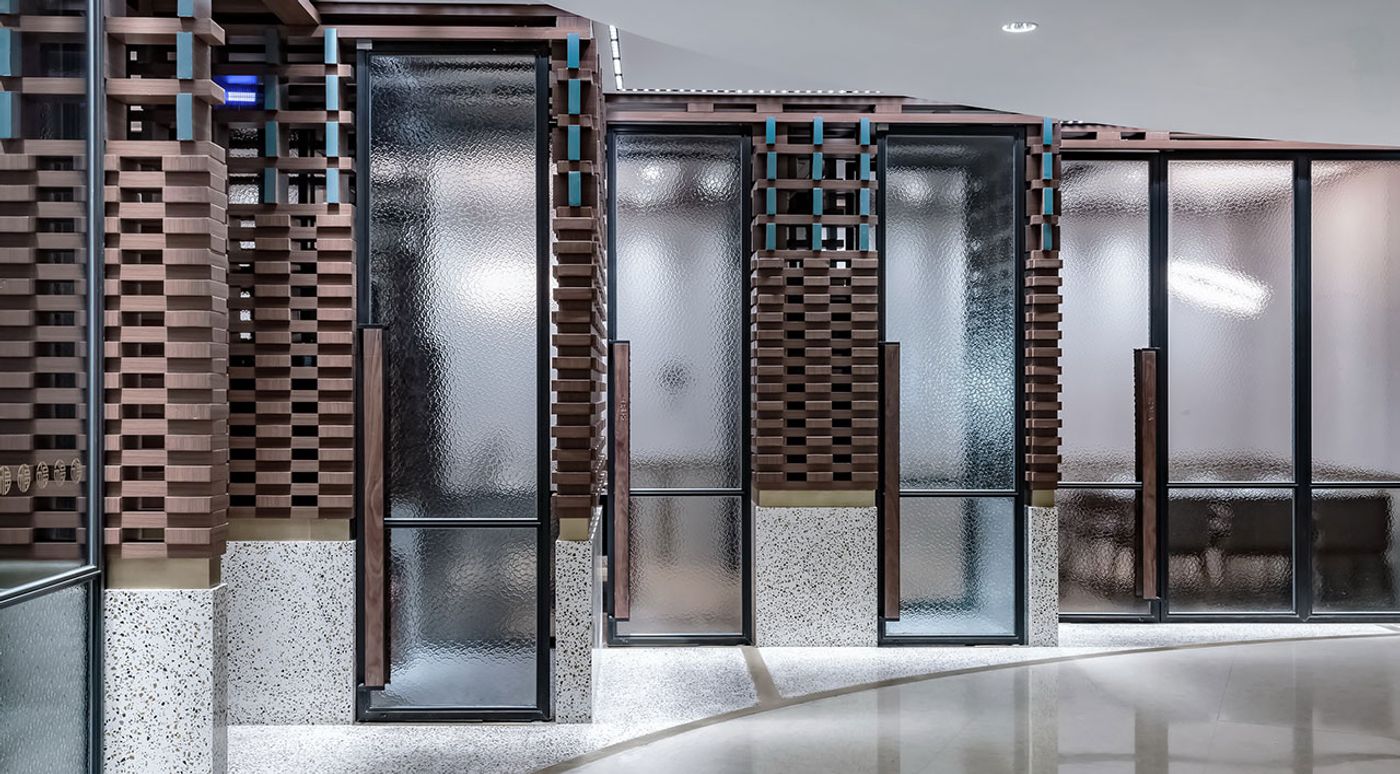
Photo © Luluxi.
